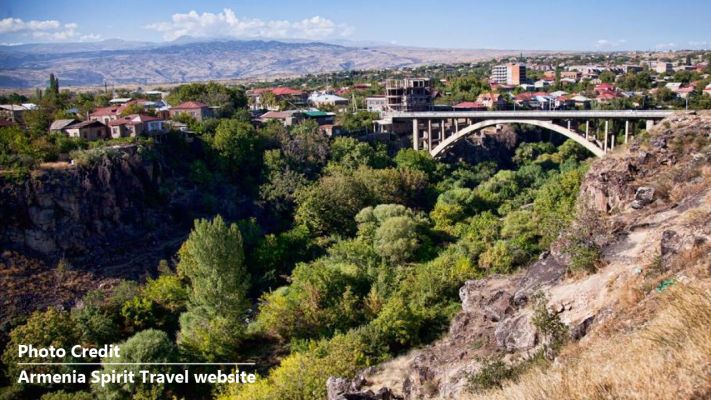A New Public Transport System will be Implemented in Ashtarak Community with the EU support

With support from the EU, a new public transport system will be implemented in Ashtarak community within the framework of the Mayor’s for the Economic Growth Programme.
“The aim of the public transport reform in Ashtarak is to develop a new transportation system to meet the residents’ requirements. It is planned to create a new network that is optimal and economically viable for us. 80% of Ashtarak’s settlements have not had public transport for years”, says Ishkhan Barseghyan, the head of the Development Programs and Tourism Department of the Ashtarak Municipality.
The Mayor’s for the Economic Growth Programme, launched in collaboration with the European Union and the United Nations Development Programme in Armenia, will operate until 2024. It will encourage local governments in Eastern Partnership countries to adopt innovative development methods that will ensure fairness and have a positive impact on the environment. The Ashtarak community joined the programme in 2019.
Thanks to this project, the public transport reforms will provide comfortable transportation for residents in all settlements in the community. The plan includes acquiring 11 minibuses and constructing at least one bus stop in each village, totaling 35 bus stops.
According to Ishkhan Barseghyan, statistics show that approximately 530 passengers in the Ashtarak community use public transport on a daily basis.
There is one urban and 34 rural settlements in the Ashtarak united community, and close to 75,750 inhabitants live there. The new public transport system will ensure safe and secure transportation for around 4815 pupils and 497 students in the community.
The new public transport system will incorporate innovative features such as smart bus stops.
“Ashtarak community has the possibility to install smart bus stops, which will be equipped with such amenities as air conditioning, heating, Wi-Fi, and GPS systems. This will allow users to see the location of the route, the schedule, and the waiting time. The stop will also be accessible to people with disabilities. It will be possible to charge devices at the bus stop as well”, Barseghyan elaborates.
The development strategy of the Ashtarak community transport system was influenced by surveys and meetings/discussions with residents.
Ishkhan Barseghyan elaborates that the results of mass polls have proven that the lack of public transport, in rural communities in particular, is perceived as a priority problem limiting opportunities for work, education, access to medical services, and trade.
“35 meetings and interviews were held with residents, and five meetings/discussions were held with public transport officials. Around 425 people participated in public discussions at the assembly and, as a result, a programme was created in accordance with the community’s socio-economic development strategy”, says Barseghyan.
This investment programme of the Ashtarak community aimed at the development of the economic and social infrastructure was included in the list of applications for receiving a subsidy from the state budget of the Republic of Armenia for 2023 – 2024. It was submitted for approval to the Council of Elders of the Ashtarak community. Representatives of private sector organisations also participated in the implementation and evaluation of the investment project.
Overall, the introduction of the new public transport system will benefit vulnerable families in the community by providing them with the opportunity to use transportation. The new transport service will cover all settlements in the community, and special rates will be available for vulnerable groups who are regular commuters.
The UNDP presents the Mayors for Economic Growth (M4EG) programme as an opportunity for participating Armenian communities to learn and practice using innovative tools and take a systemic approach to address their challenges. For instance, human-centered design places people at the centre of problem-solving, the same as is the approach of developing locality-based solutions.